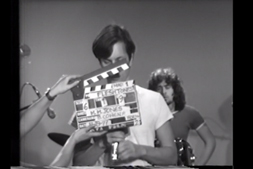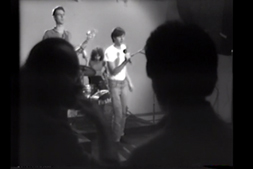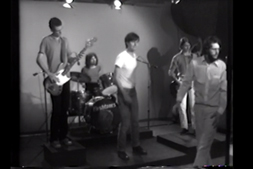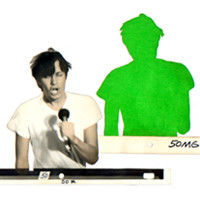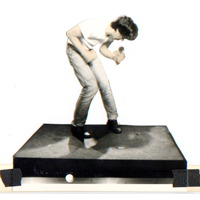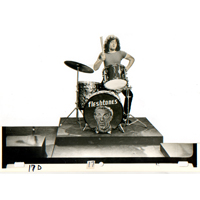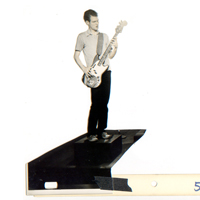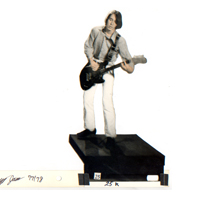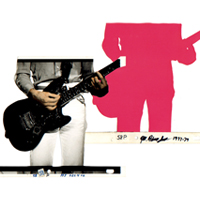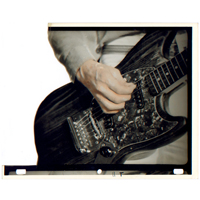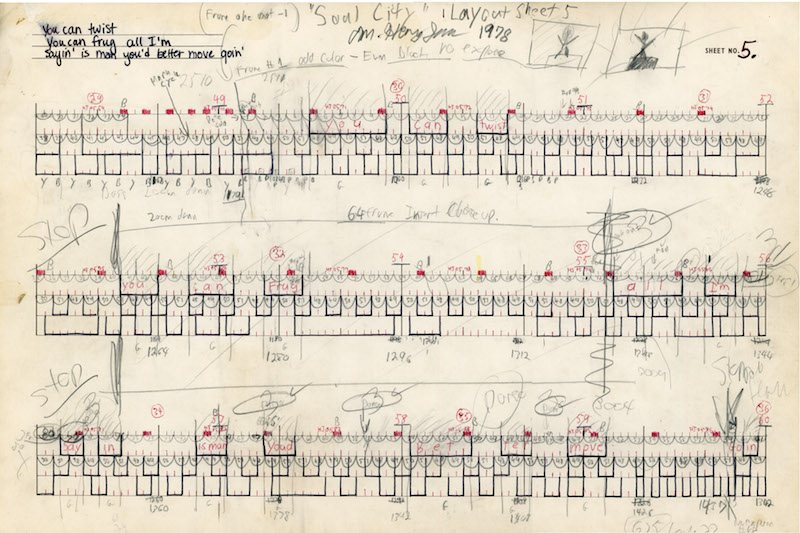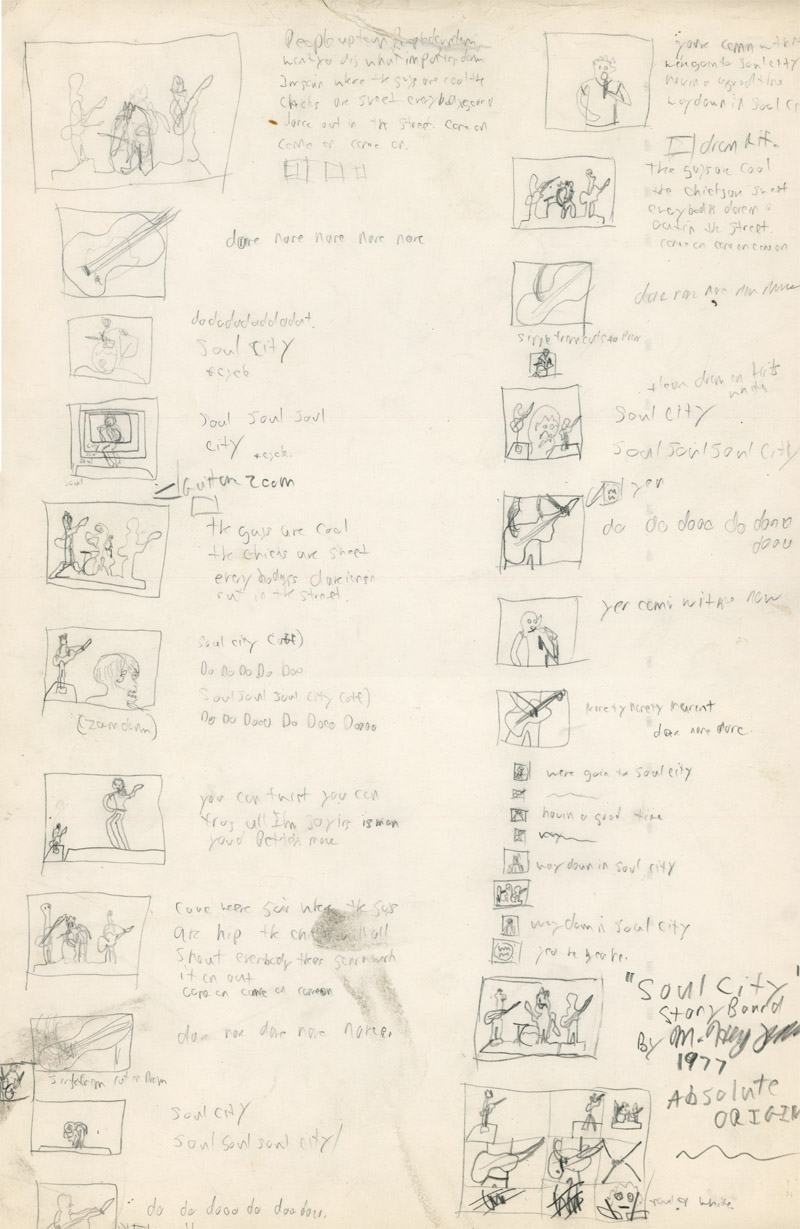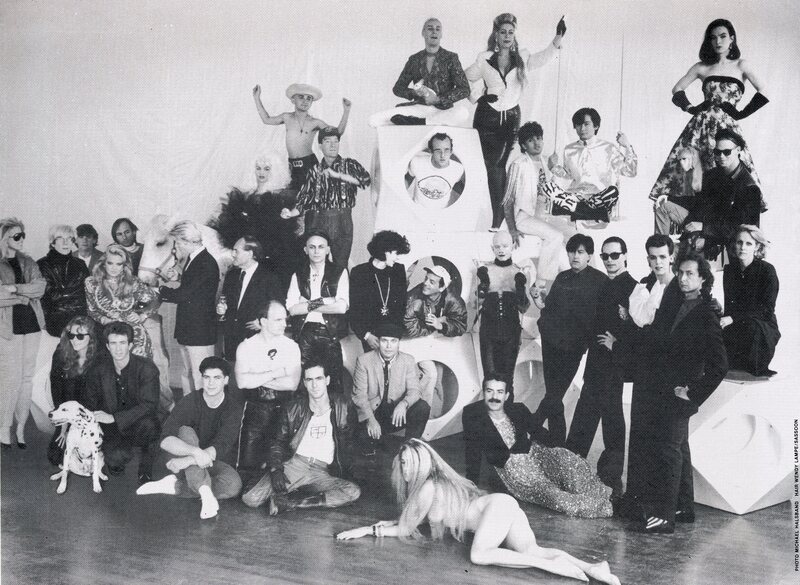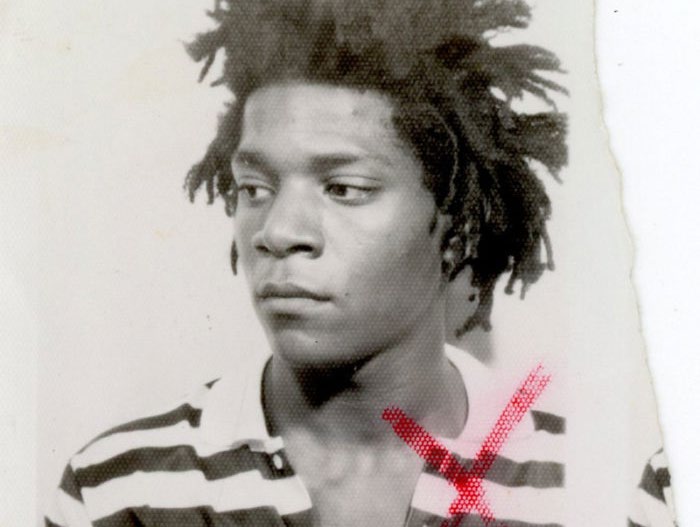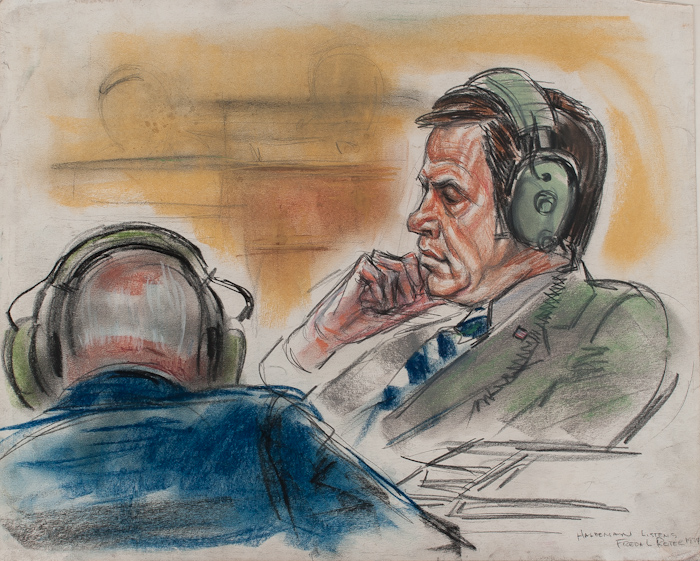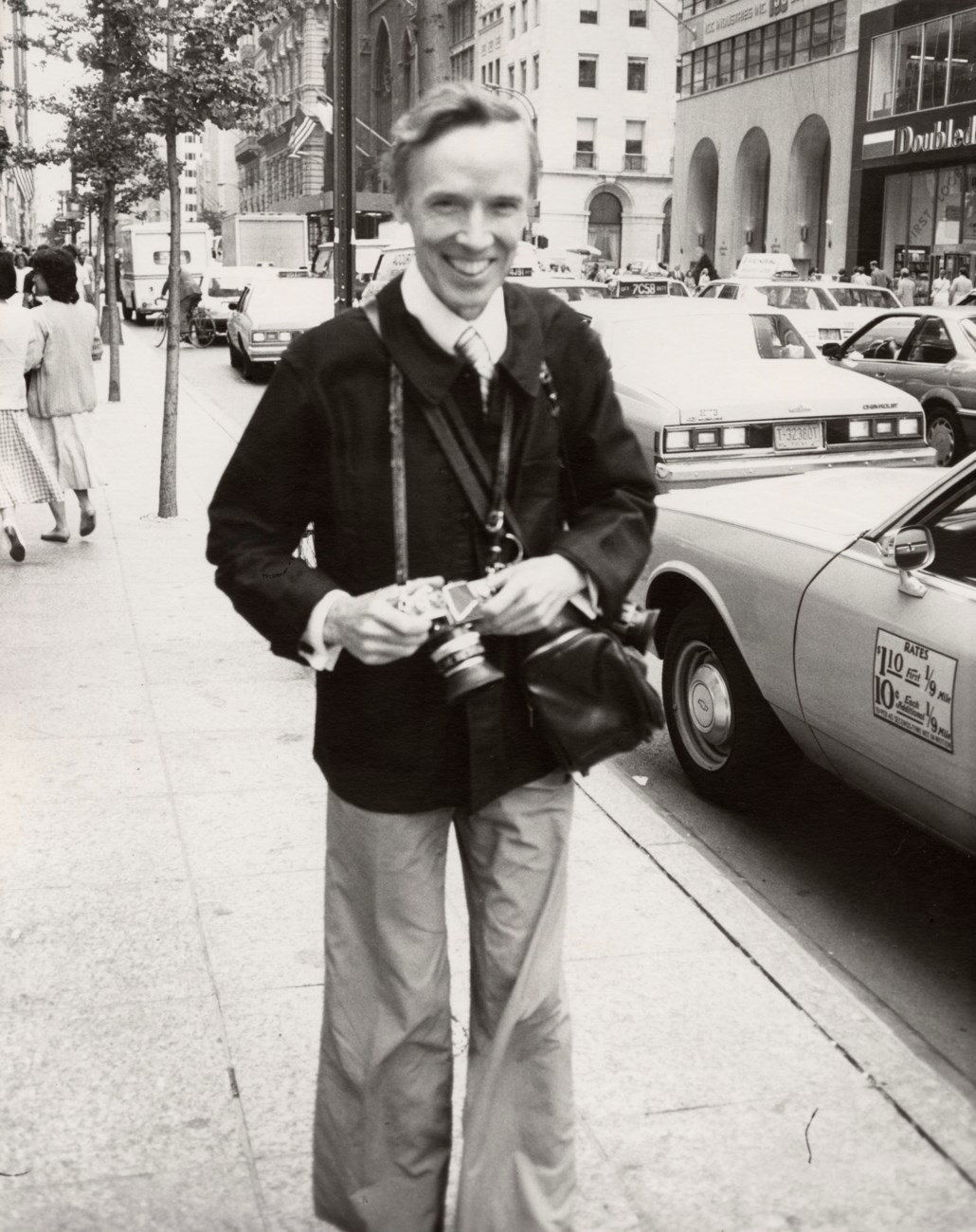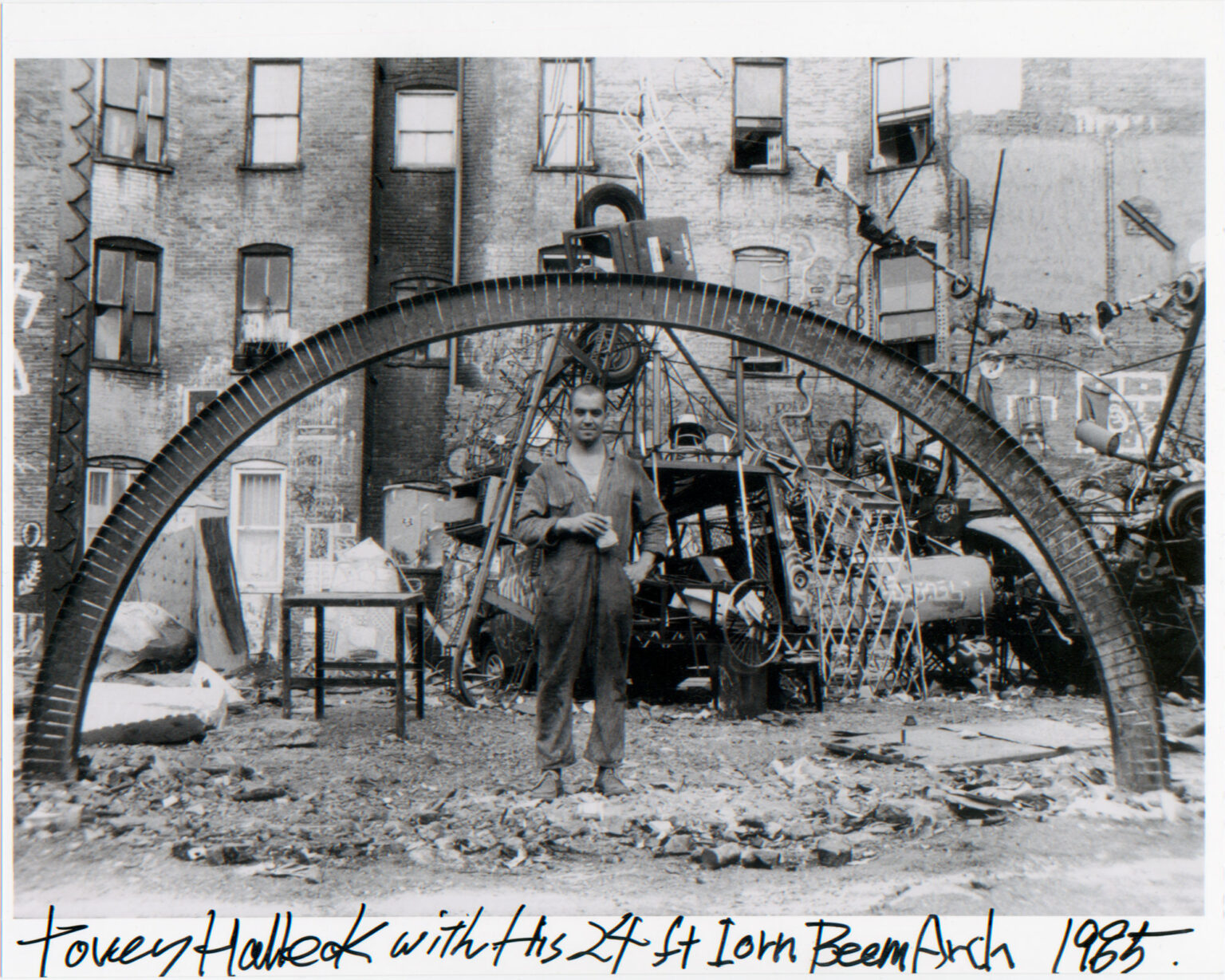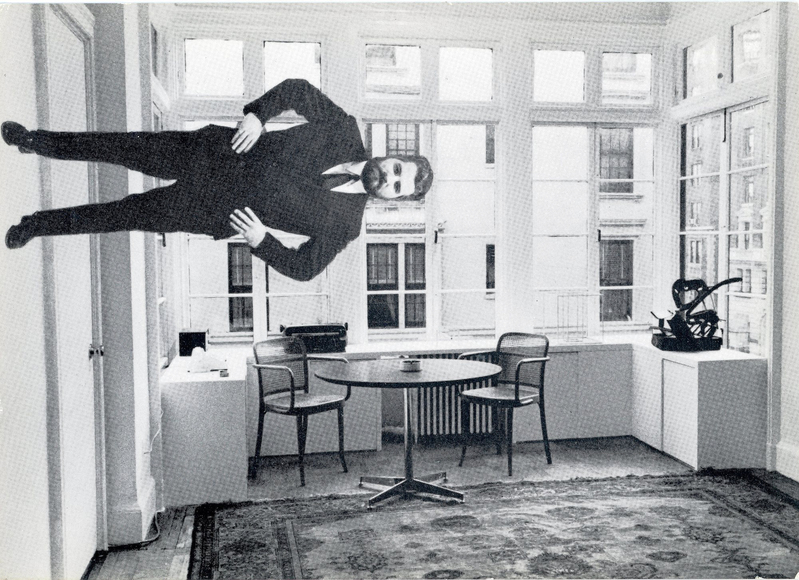Photo Cut-Outs: M. Henry Jones’ Film Soul City, 1977–79
By Marc H. Miller
The emergence of digital photography during the last decade has provided a new perspective on photographs from the pre-digital era. The photographs that M. Henry Jones created in the late 1970s for the animated film Soul City have a special place in this story of technological change.
Sometimes the urge to create precedes the technology that makes it practical. That was certainly true for Jones’ 2.5-minute photo animation of a performance by the rock group Fleshtones, enhanced with stroboscopic effects. Created before the widespread use of computers, digitization, and tools like Photoshop (1988), Jones’ special effects were created solely through tedious analog techniques. It took nearly two years but there was an unexpected bonus: 1700 individually printed photographs, each hand-cut with an X-acto knife and then hand-colored. This was the raw material for the film, reshot frame-by-frame with changing backgrounds. Today these photographs stand on their own both as beautiful objects and as an artistic record of the creative toils that preceded the digital revolution.
Soul City Outtakes, Director, M. Henry Jones
Soul City also proved to be prophetic in another way. Created three years before the 1981 launch of Music Television (MTV), Jones’ short film of the Fleshtones performing Soul City has been cited as an important fine-arts precursor of the commercial genre of rock videos. According to the Wall Street Journal, Jones’ “motives were more perceptual than promotional”; his goal was to “overload viewers” and “induce retinal after-images” (March 3, 2011). The film derives first from Jones’ love of rock and roll but its techniques were rooted in the avant-garde films of his mentors Harry Smith and Paul Sharits. Soul City is emblematic of how serious young artists like Jones redefined both high art and popular culture in the post-pop art world of the late 1970s.
To understand Jones you need to know the lively East Village art scene in which he thrived in the late 1970s and 80s. Nightclubs like CBGB and Club 57, and non-profit art spaces like Charas/El Bohio and The Kitchen encouraged multimedia pursuits. As a student at the School of Visual Arts in the mid-1970s, Jones was inspired by an extremely talented peer group. Two ex-students set the tone: John Holmstrom, a cartoon major who co-founded Punk Magazine, the artsy fanzine that named the new counter-culture; and photography student Chris Stein, a co-founder of the rock group Blondie. In addition, Jones’ classmates included Keith Haring, soon to attract international attention for his subway drawings; painter Kenny Scharf; poster maker and performance artist John Sex; Tim Rollins, a founder of Group Material; the rock musician and special effects master Screaming Mad George; and Peter Zaremba, the singer for the Fleshtones, whom Jones first met in an animation class.
In the thirty-five years since Soul City, Jones has continued to make similar animations both for his own art and for commercial clients. He also continues to explore new ways to fuse art, optics and technology. Today he is working primarily with an advanced form of lenticular 3-D photography in his storefront studio Snakemonkey, a longtime East Village landmark.
From the Collection
$750
$600
$400
$750

